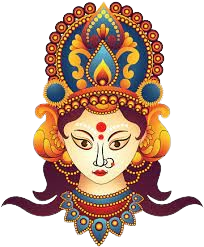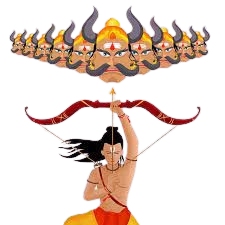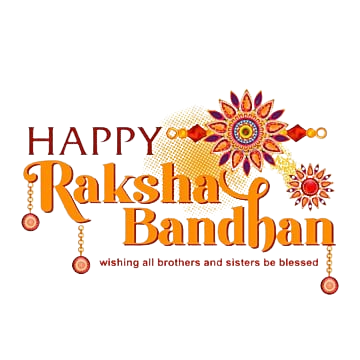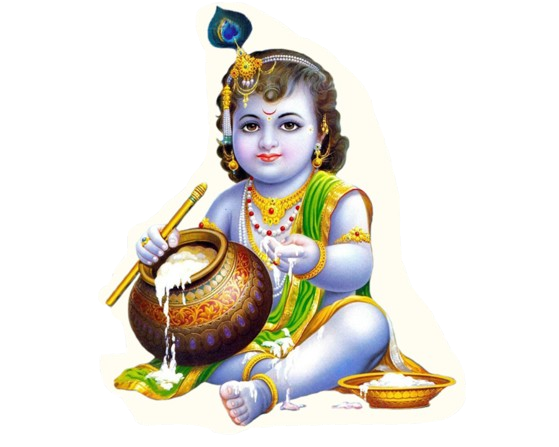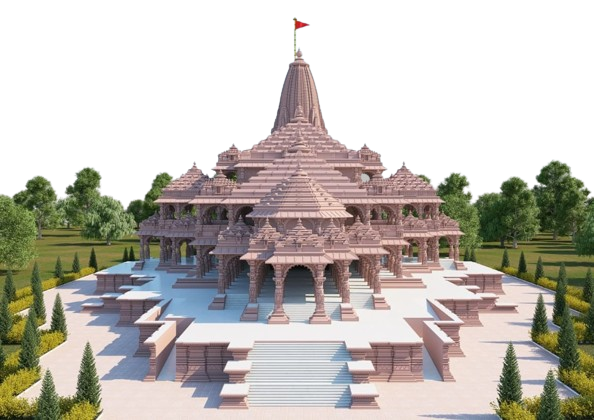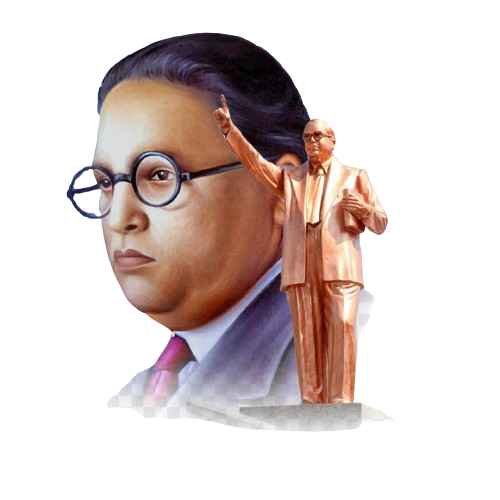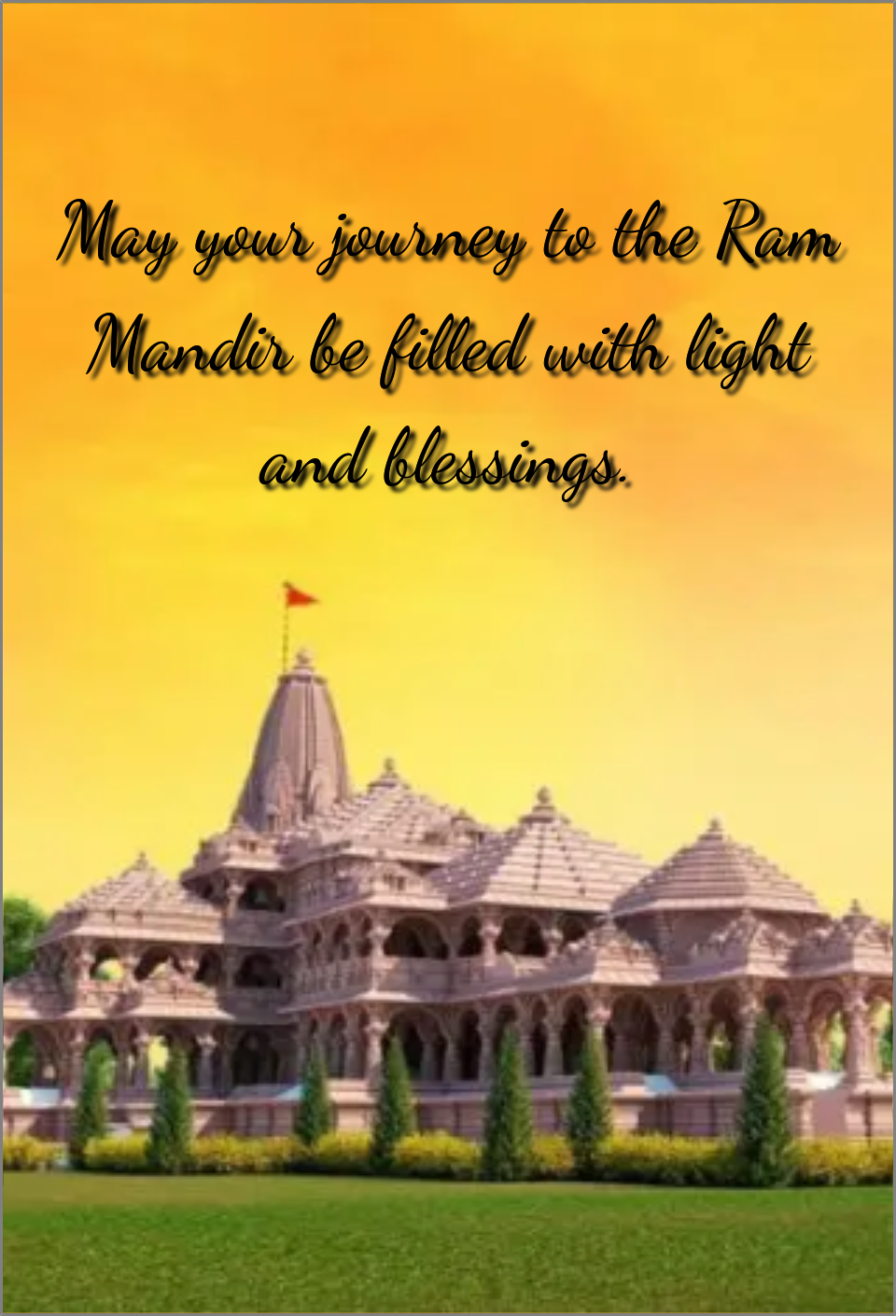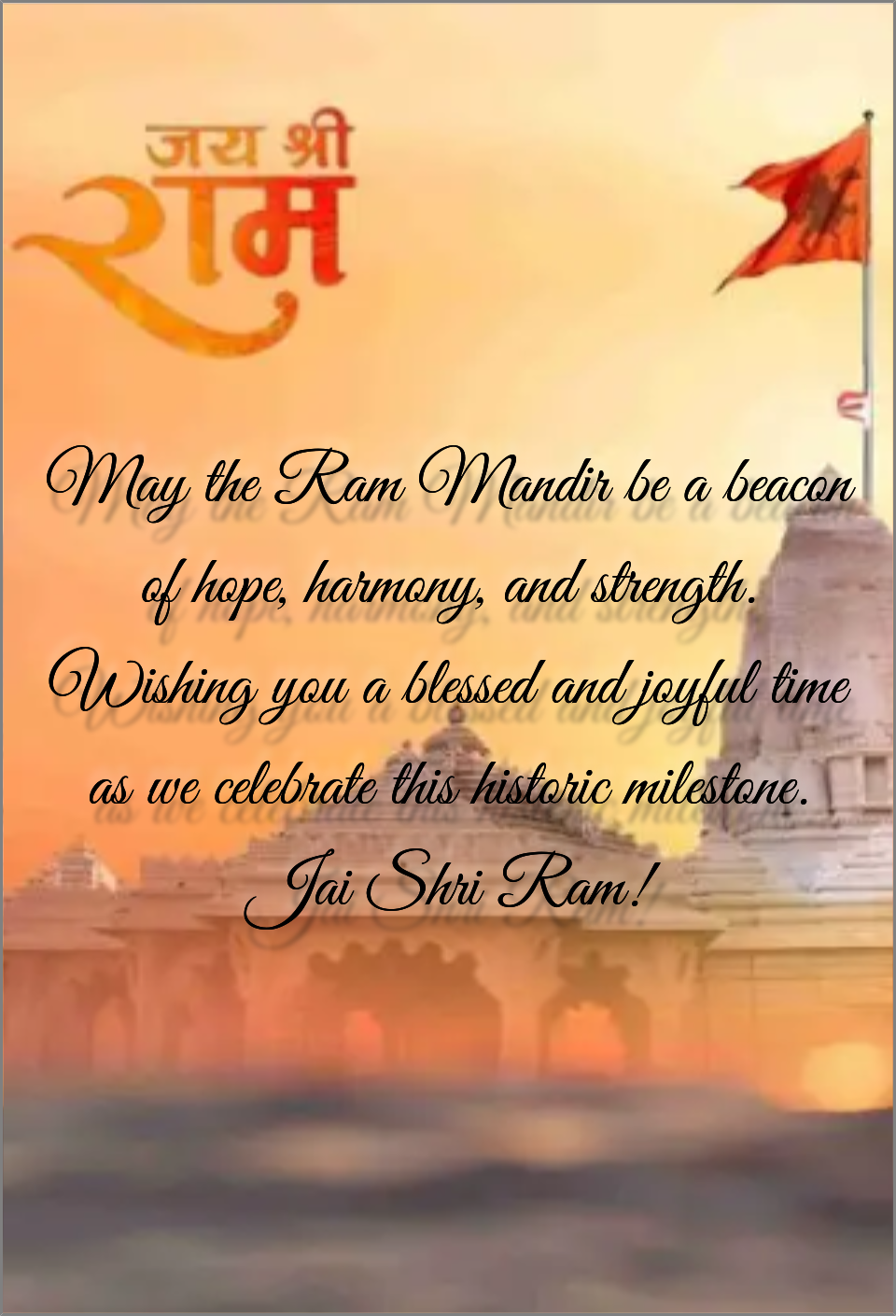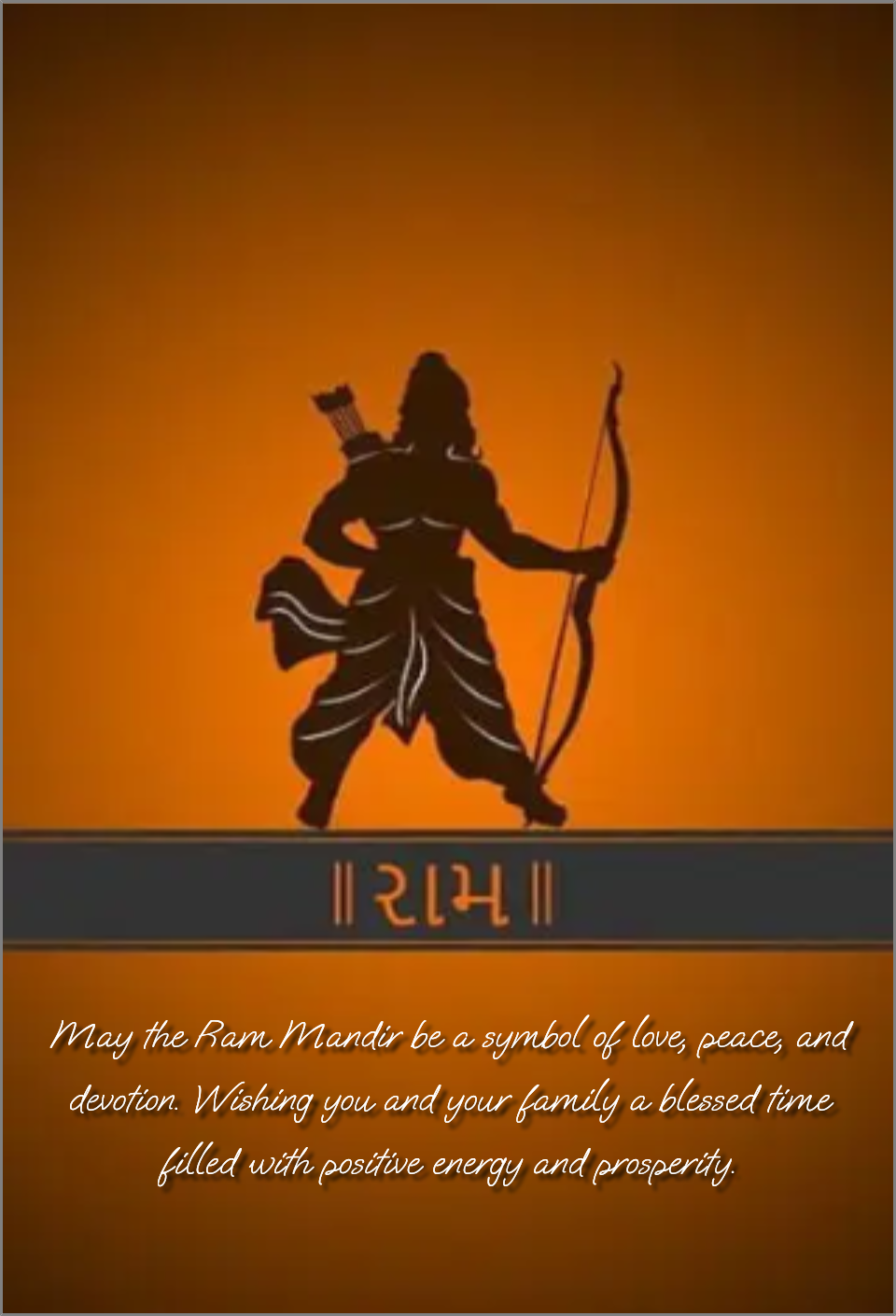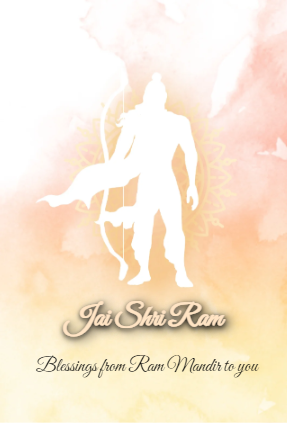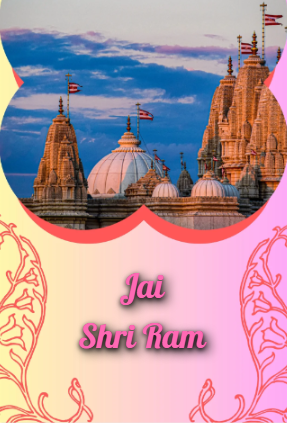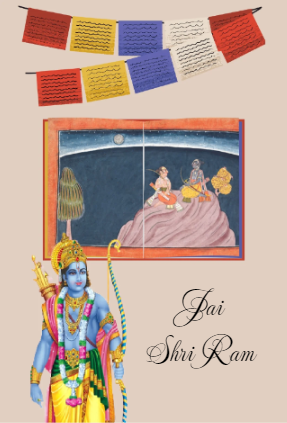The Ram Mandir: Symbol of Faith, Culture, and Unity
The Ram Mandir in Ayodhya, Uttar Pradesh, holds a special place in the hearts of millions of Hindus worldwide. It is not just a temple; it’s a symbol of devotion, perseverance, and faith in Lord Rama, one of the most revered deities in Hinduism. The temple stands as a testament to the cultural and spiritual legacy of India, representing the epic of the Ramayana and the eternal message of dharma (righteousness), compassion, and unity. Located on the banks of the Sarayu River, Ayodhya is believed to be the birthplace of Lord Rama, making the Ram Mandir a sacred pilgrimage site. The temple is a dream come true for many devotees, and it has a long history intertwined with India's cultural identity and religious devotion.
The Ram Mandir in Ayodhya is more than just a place of worship; it is a symbol of faith, unity, and spiritual continuity. For millions of Hindus, it embodies the timeless values of Lord Rama, whose life and teachings inspire righteousness and compassion. The temple stands as a beacon of hope, reminding us of the power of perseverance, the strength of unity, and the eternal significance of dharma. As we look forward to the completion of the Ram Mandir, it promises to be a spiritual and cultural landmark, uniting people in their devotion to Lord Rama and celebrating the rich heritage of India. Whether through prayer, celebration, or introspection, the Ram Mandir offers a sanctuary for the soul, a place where the timeless virtues of Lord Rama are alive and revered.
Historical Context of the Ram Mandir
The Ram Mandir has a deep-rooted historical and religious significance. According to Hindu scriptures, Ayodhya is where Lord Rama, the seventh incarnation of Lord Vishnu, was born and ruled as a just king. The Ramayana, written by Sage Valmiki, narrates the life of Lord Rama, his virtues, and his unwavering commitment to dharma.
Over centuries, the site of Ram's birth, known as Ram Janmabhoomi, became a focal point of worship for millions of Hindus. However, due to historical conflicts, the temple was demolished, and disputes over the land ensued for decades. After a long legal and social struggle, the Supreme Court of India ruled in favor of constructing a Ram Mandir in 2019, paving the way for a temple that represents the aspirations of a nation.
The Architectural Marvel of the Ram Mandir
The Ram Mandir in Ayodhya is not just an architectural masterpiece but also a profound expression of Hindu culture, heritage, and religious devotion. The design of the temple is based on ancient Nagara-style architecture, reflecting the grandeur of traditional Hindu temples. Some key architectural features include:
- Intricate carvings depicting scenes from the Ramayana, showcasing the life and virtues of Lord Rama.
- Sikhara (temple spire) rising high, symbolizing the connection between the earth and the heavens.
- Garbhagriha (sanctum sanctorum), where the idol of Lord Rama will be installed, radiating peace and devotion.
- Pillars adorned with sculptures of divine figures, animals, and nature, highlighting the rich artistic tradition of India.
Spiritual Significance: Ram Mandir as a Symbol of Dharma
The essence of Lord Rama lies in his adherence to dharma—the righteous path. His life is seen as an example of the ideal son, brother, husband, and king. The construction of the Ram Mandir is not merely a religious act; it represents the reaffirmation of dharma in a modern context. The temple embodies the timeless teachings of Lord Rama, which emphasize the values of truth, sacrifice, justice, and compassion.
For Hindus, visiting the Ram Mandir is more than a pilgrimage; it is a journey into the essence of what it means to live a life guided by ethics, integrity, and selflessness. The temple stands as a beacon of hope and faith, especially for those who find inspiration in Lord Rama’s unwavering commitment to moral principles.
Cultural and National Impact of the Ram Mandir
The Ram Mandir is not just a religious structure; it has become a cultural landmark that reflects India's ancient heritage and diverse traditions. The temple’s construction has unified people across various walks of life, drawing support from millions of devotees globally.
- Festivals and Celebrations :Major Hindu festivals such as Ram Navami (the birth of Lord Rama) and Diwali (which marks Lord Rama’s return to Ayodhya after his exile) will see grand celebrations at the temple, turning it into a center of cultural festivities.
- Tourism and Economy :The temple is expected to boost tourism in Ayodhya, drawing millions of pilgrims and visitors from across the world. The influx of tourists will create economic opportunities, fostering growth in the region.
- National Pride :For many Indians, the Ram Mandir is a source of national pride, representing the strength and resilience of the Indian identity, culture, and civilization.
Modern Pilgrimage and Technology: A New Era for Devotees
In today's digital age, the Ram Mandir has embraced technology to connect with devotees worldwide. With virtual tours, live streaming of temple events, and the availability of online puja bookings, the temple is accessible to those who may not be able to visit in person. This modern approach ensures that the temple remains a center of devotion for global Hindus, connecting devotees with their faith no matter where they are.
FAQ for Ram Mandir Greeting Cards?
- What is the significance of sending a Ram Mandir greeting card?
Sending a Ram Mandir greeting card is a meaningful way to express your devotion to Lord Rama and share blessings of peace, prosperity, and righteousness with your loved ones. It’s especially relevant during festivals like Ram Navami, Diwali, or any personal or community event celebrating Lord Rama.
- How can I create a Ram Mandir-themed greeting card?
- Visit 3Dpostman.com and log in or sign up.
- Browse through the Ram Mandir-themed templates in the Greeting Card section.
- Customize the card with your personal message and design preferences.
- Save and share your card digitally via email, social media, or messaging apps.
To create a Ram Mandir-themed greeting card on 3DPostman
- What types of designs are available for Ram Mandir greeting cards?
3Dpostman offers a variety of designs for Ram Mandir-themed greeting cards
- Can I add personalized messages and photos to my Ram Mandir greeting card?
Yes! You can fully personalize your Ram Mandir greeting card by adding your own message, changing the fonts and colors, and even uploading personal photos to make the card more meaningful.
- Is it possible to include religious quotes or prayers in the card?
Absolutely. You can add religious quotes or prayers such as verses from the Ramayana or shlokas praising Lord Rama. Customize the text area to include blessings or spiritual messages that align with the theme of the Ram Mandir.
- Can I send Ram Mandir greeting cards for any specific occasion?
Yes, Ram Mandir greeting cards are perfect for various occasions like: Ram navmi, diwali etc.
- How do I share my Ram Mandir greeting card online?
Once your card is ready, you can easily share it through email, whatsapp, social media platform.
- Can I add animations or music to my Ram Mandir greeting card?
Yes, 3Dpostman allows you to enhance your greeting card by adding animations such as glowing temple lights or moving floral decorations. You can also include devotional music or bhajans related to Lord Rama to give your card a spiritual touch.
- Are there any costs for creating Ram Mandir greeting cards on 3DPostman?
3Dpostman offers both free and premium options. You can choose free templates, or select from premium designs that offer more customization features like animations, music, or advanced design elements.
How to Create a Ram Mandir Greeting Card on 3DPostman
Creating a Ram Mandir greeting card is a heartfelt way to connect with your friends and family by sharing the blessings of Lord Rama. Whether it’s for Ram Navami, Diwali, or any special religious occasion, you can craft a beautiful digital greeting card in just a few minutes using 3Dpostman. Here’s a simple guide to help you create and share your own Ram Mandir-themed greeting card.










